Lisbon’s Wild Coast with Fuji X-T1
I’m probably biased when I say that I genuinely believe that Lisbon is one of the most attractive cities in the world, but what many visitors who come here don’t get to see is how fantastic the nearby coast is. You don’t have to go far, just 40 minutes west or south west brings you to some amazing beaches and for landscape photographers who are willing to look a little harder, some of the most dramatic coastline for photography in Europe is less than an hour’s drive from the city center.
Cabo da Roca is mainland Europe’s most westerly point. There’s a lighthouse above one hundred meter high cliffs and the coast here is beautifully wild. At the foot of the cliffs are some stunning beaches and although one or two are quite well known, others are hidden gems that are rarely visited by anyone. Over the winter I’ve been using the Fuji X system to photograph this wonderful stretch of coast at sunset.

Some of the beaches are quite tricky to access with narrow paths going down steep cliffs which then have to be ascended again in the dark after finishing shooting, so the lightweight Fuji system is ideal as I don’t have to carry a heavy pack with a dSLR and large tripod up the near vertical paths out of the beaches. Whenever I go out landscape shooting I try to travel as light as possible and the X system was made for this kind of approach. When shooting from a beach I’ll almost always use a wide angle and the XF10-24mm is a great lens; it’s sharp and has a nice focal length that covers pretty much any composition I might want from a coastal photography shoot. This lens along with the X-T1 and a Really Right Stuff tripod bracket weighs in at less than one kilogram. I’ll drop this in a Lowepro Inverse 100 waist pack which is superb for this kind of work It comfortably fits the camera and lens along with another zoom as well, and there are straps where I can attach a Gitzo Traveller 1 series tripod (which weighs a little over one kilogram) underneath. There’s space for my water bottle, a couple of fruit bars, a fold up rain jacket, my three Lee filters and filter holder, as well as cable release, spare batteries, lens cloths and a head lamp, which is essential for going back up the cliffs again in the dark. There’s also room for my keys and phone. Altogether the bag with all that kit weighs under five kilograms, and as it’s a waist pack all the weight is carried on the hips. I barely feel it when it’s there, and it gives complete freedom of movement, as well as swinging around to my front so I can take stuff out/put it back in without putting the bag down which is great for working next to the ocean. Before I switched to the X system when I was using a heavy, bulky dSLR, I never gave waist packs a thought as I could never have carried all my kit in one, but with the Fuji system they work really well for travelling super fast and light.
There are essentially four beaches spread across a couple of kilometers around the headland of Cabo da Roca of which the northernmost, Praia da Adraga, is by far the best known. Unlike the other beaches here it’s easy to access with a good road going all the way to the beach where there’s a car park and restaurant. A short walk across the sand brings you to the famous “shark fin” rocks so beloved of local photographers. It’s highly unlikely you’ll have this location to yourself so working around other photographers is often a must here. It’s a great location though, and if the tide is in the right place (midway between high and low tide), then it’s possible to get some great shots of the waves washing around the iconic rocks. Capturing the water racing up the beach into the foreground immediately in front of and below the camera means getting your feet wet so shooting at Adraga means bringing appropriate footwear. Wellington boots or waders are great, but also open deck shoes that drain the water out of them are fine if you don’t mind getting your feet wet, although it’s better if they have thick protective soles.

Fuji X-T1 . Fuji XF10-24mmF4 @ 10mm . f/8 . 15″ . ISO 200
Also well known, but more difficult to access is Praia da Ursa, the next beach along from Adraga heading south back towards Cabo da Roca. It has two huge rock stacks “Ursa” and “Gigante” at the northern end of the beach, and access to the beach is via a long winding path that goes all the way down the cliffs. It’s not particularly tricky, and ascending back up takes around 15 minutes of walking up the path which can be quite steep in a couple of places. The beach is growing in popularity and there are often one of two photographers there, whereas just 3 or 4 years ago you’d probably have had the beach to yourself at sunset. Ursa is a wide sandy beach, and from a photographic point of view it can often be tricky to find a foreground as there aren’t many rocks in the area where the tide usually covers. There are a few rocks at the south end of the beach but these are almost always in the shade due to some towering rocks just behind them. The last time I was there earlier this year the tide was in the middle of the beach and on it’s way out and the receding waves left wet sand behind which made great reflections.
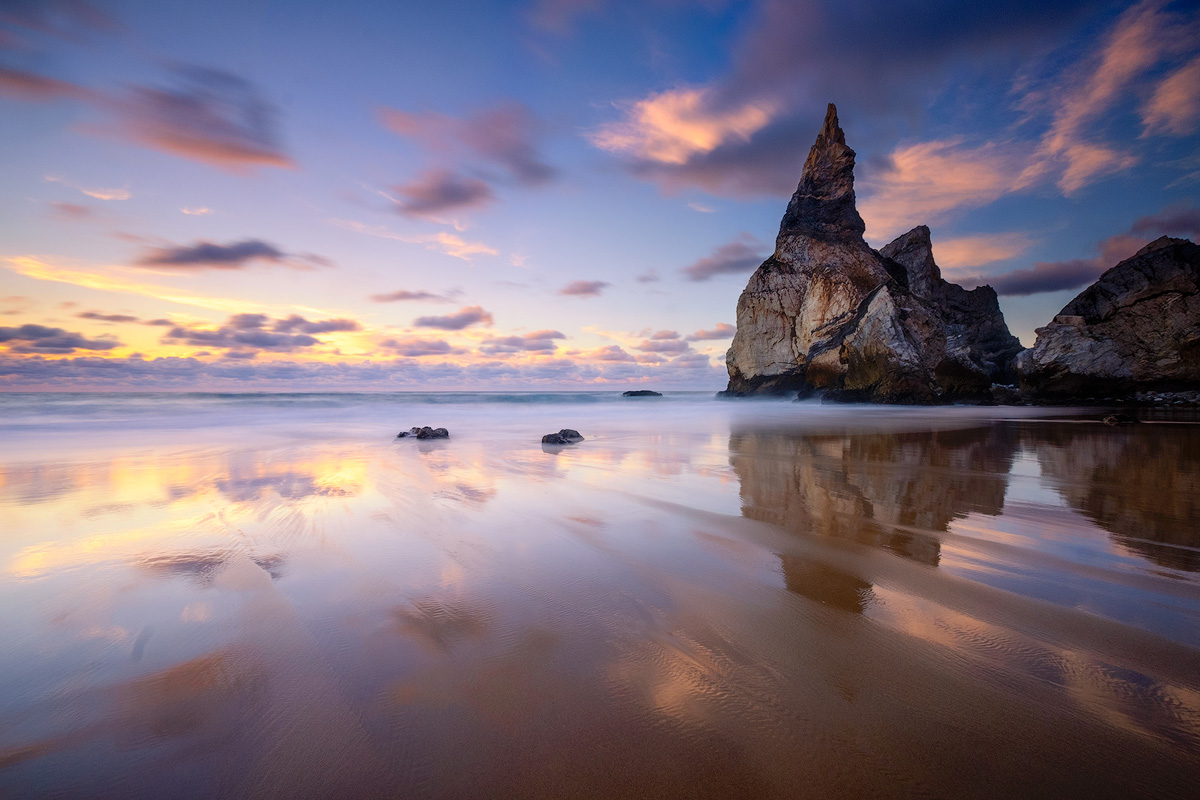
Fuji X-T1 . Fuji XF10-24mmF4 @ 10mm . f/16 . 10″ . ISO 200
It was quite tricky shooting them because the reflections tend to fade after a few seconds as the water drains away and then the sand is covered by another wave. I set the exposure on the camera, waited for a wave to come, then as it receded, chased it down the beach, placed the tripod in the sand and quickly composed using the LCD screen, firing off as many exposures as I could before the next wave came in. I was using a neutral density filter to slow down the exposure as I wanted to blur the water and clouds a little, and so any waves that came back up the beach moved the sand underneath the tripod which in turn moved the camera mid exposure ruining the image. Using the articulating rear screen on the X-T1 meant that even though I was shooting with the camera quite low to the beach I could quickly compose and level the camera whilst also keeping an eye on what the sea was doing and ensure that a wave didn’t catch me by surprise.

Fuji X-T1 . Fuji XF10-24mmF4 @ 10mm . f/10 . 56″ . ISO 200
Between the southern end of Ursa and Cabo da Roca is Praia do Aroeira, one of the most beautiful beaches in Portugal. The path down to the beach is very steep, particularly the top part, so you have to descend with care as it’s easy to slip on the path. The beach itself is covered with large rocks, which make great foreground interest particularly when they are wet, but they do make moving around the beach tricky and you have to be careful where you put your feet as it’s very easy to step on a rock and roll your ankle. The rocky headland that separates Aroeira from Ursa is a beautiful red that really seems to almost glow with colour in the last light of day and makes a great focal point for an image.

Fuji X-T1 . Fuji XF10-24mmF4 @ 10mm . f/8 . 2″ . ISO 200
Every time I’ve visited Aroeira there’s been incredibly high wind that sweeps in off the sea. The weather sealing on the X-T1 has certainly proved it’s worth here as the waves can also be pretty rough, and combined with winds whipping spray off the water and onto the beach, the camera has got pretty wet on more than one occasion. It’s never faltered for a minute though, shooting in high winds, lots of spray and salt water everywhere, the X-T1 performs just as well as my old Nikon dSLRs ever did.
There are various other compositions at Aroeira as it features a couple of small rocky pinnacles just offshore that make great subjects especially when there’s plenty of drama in the sky.
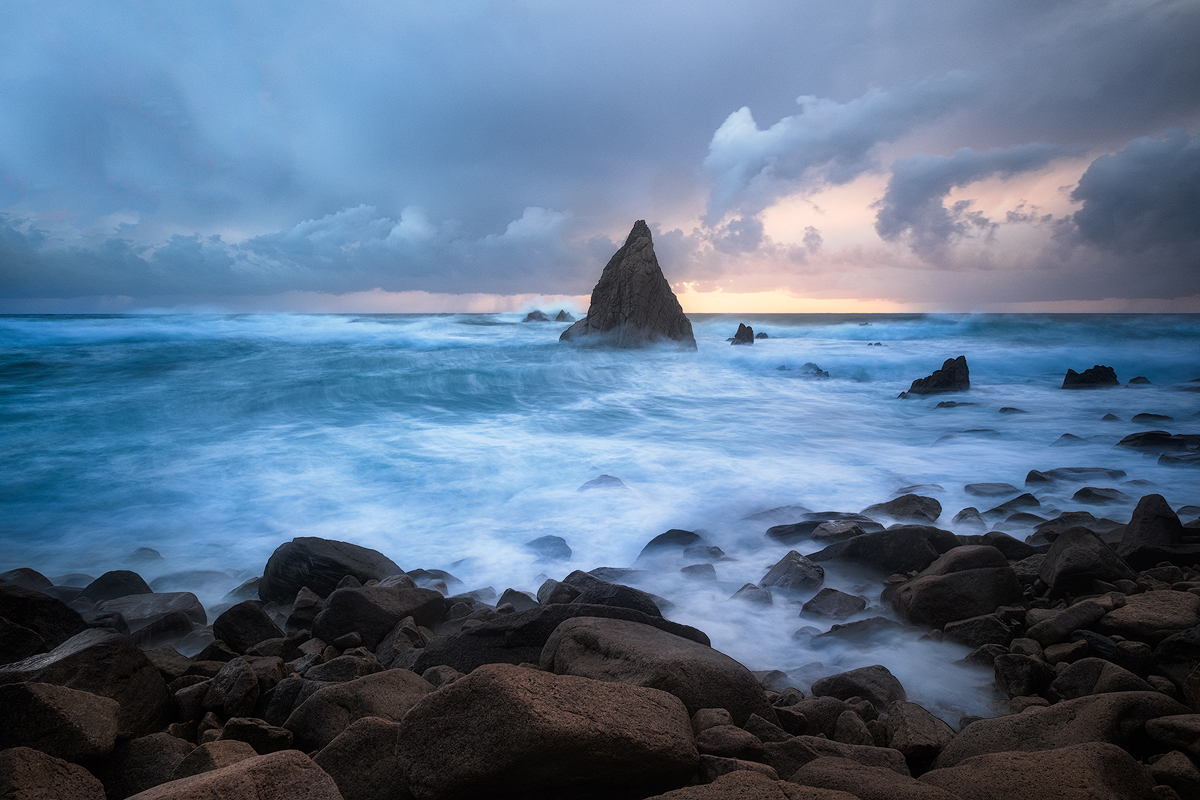
Fuji X-T1 . Fuji XF10-24mmF4 @ 13,2mm . f/9 . 1/25″ . ISO 200
There are other small rock stacks all around the headland and even a small cave underneath it. I’ve not yet managed to get a shot from there that I’m happy with as whenever I’ve been there tide has either been in the wrong place or there’s been too much wind whistling through the cave carrying so much spray that it’s been impossible to keep water off the lens long enough to make an exposure. Still, that’s just another reason to keep going back.
The headland itself has a small fisherman’s path leading up to it and it’s a great place to shoot from when the wind isn’t too ferocious. The path isn’t the easiest to negotiate and if you’re up there after the sun has set, getting back to the main path to the beach takes a lot of care in the dark.
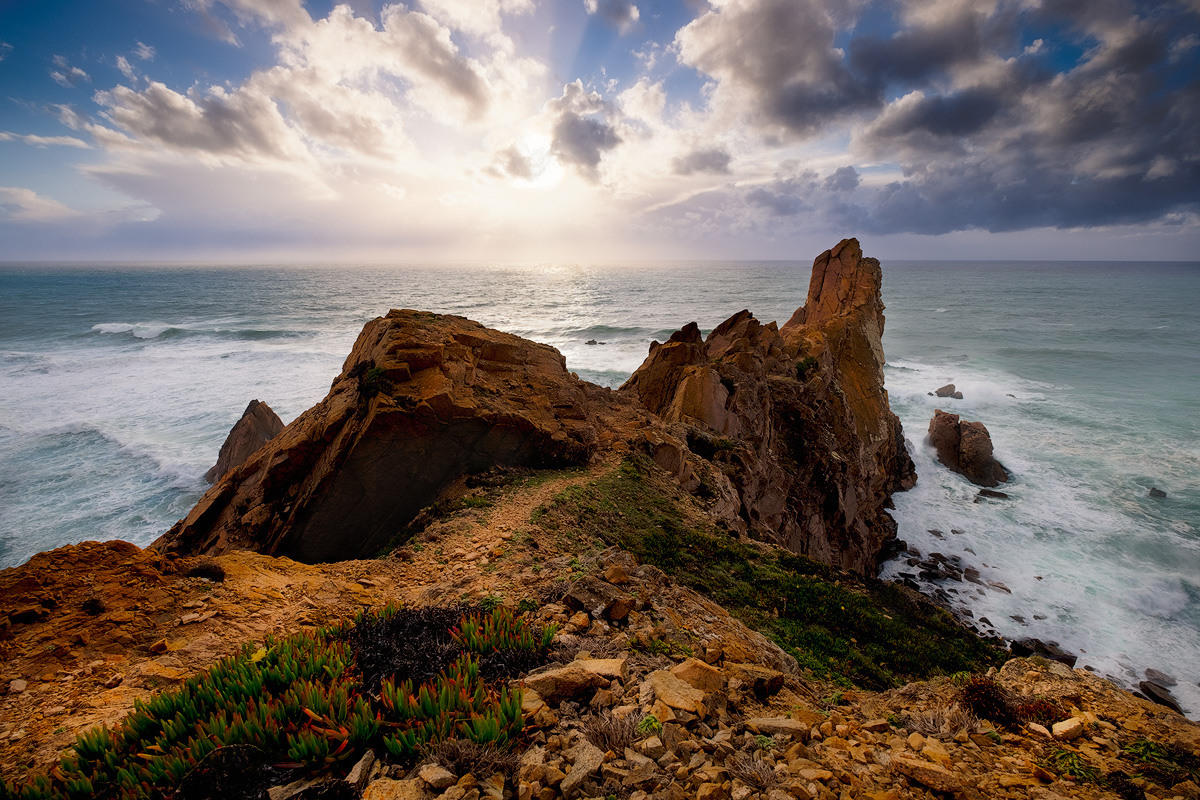
Fuji X-T1 . Fuji XF10-24mmF4 @ 10mm . f/8 . 1/500″ . ISO 200
Once again, having the articulating LCD screen makes composing with the camera low down and close to the rocks much easier than having to use a viewfinder, or even a fixed LCD screen.
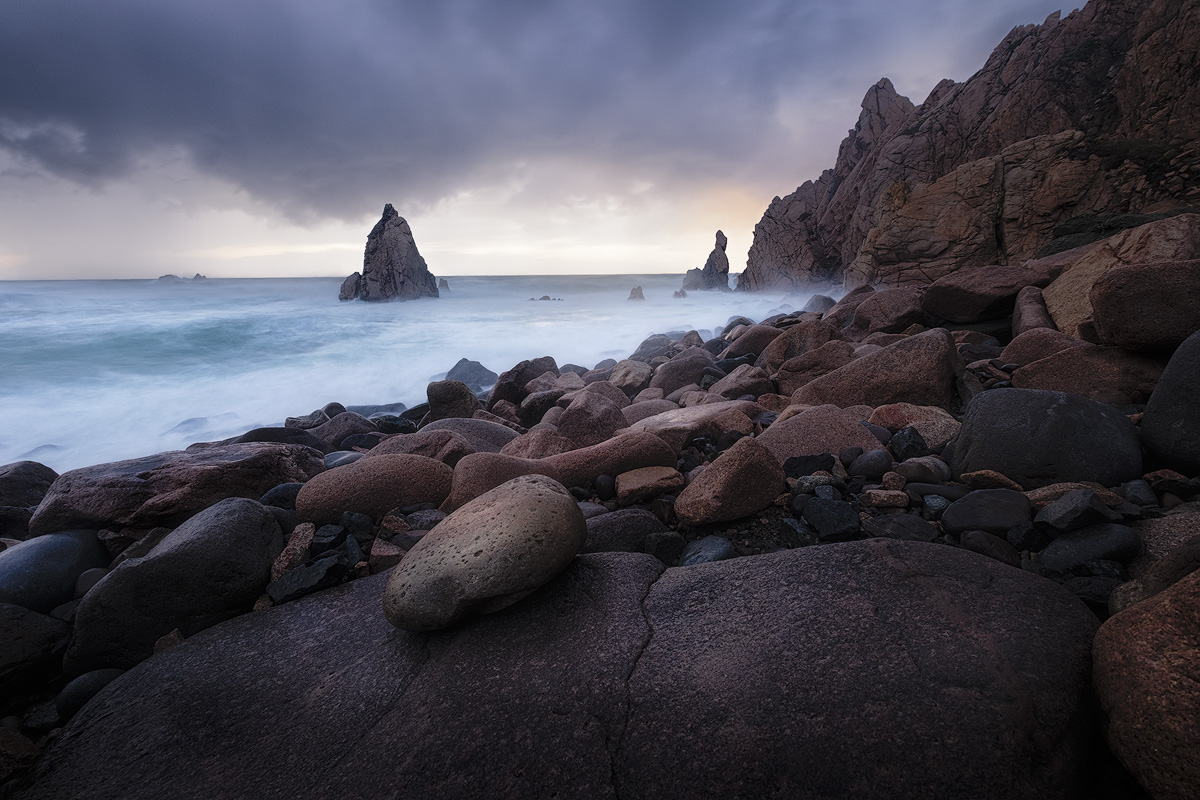
Fuji X-T1 . Fuji XF10-24mmF4 @ 10mm . f/8 . 2.5″ . ISO 200
As I said above, the path down to Aroeira is pretty steep, particularly the part at the top where you occasionally need to use your hands as well as your feet. This means that the most difficult part is right at the end of the climb when you’re already tired from the climb you’ve done to get to this point, and if you’ve stayed on the beach shooting into the blue hour then it’s likely to be pretty dark by the time you get here. Once again having a really lightweight kit like the Fuji system is a blessing here, as it is in the final beach along this coast, Praia do Ouriçal, which also has a long, steep path down to and up from the beach.
Ouriçal is located immediately to the south of the lighthouse at Cabo da Roca and the path down to it starts almost at the monument at the top of the cliffs where there are always crowds of people. Not many of them make it down to the beach though, as the path starts quite steep and gets steeper until the last 5 meters which are near vertical and someone has tied a rope there to make access a little easier. Like Aroeira, the beach is made up completely of large round rocks which make it much easier to find a foreground than in the sandy Ursa. Ouriçal also has some large rocks stacks just offshore. The most famous of these has a hole going right through it and local people believe it resembles a seated lion. It’s another beautiful beach and as it’s around to the south of the Cabo da Roca headland it’s often protected from the worst of the wind and rough waves.

Fuji X-T1 . Fuji XF10-24mmF4 @ 10mm . f/9 . 5″ . ISO 200
I’ve been shooting the beaches in this area since I first started photography around 10 years ago, but the compact Fuji X System has certainly made them easier to access. They are among the most beautiful and wildest beaches in Europe and for anyone making a trip to Lisbon who’s interested in landscape or coastal photography visiting these beaches is surely worth some time out of your itinerary.

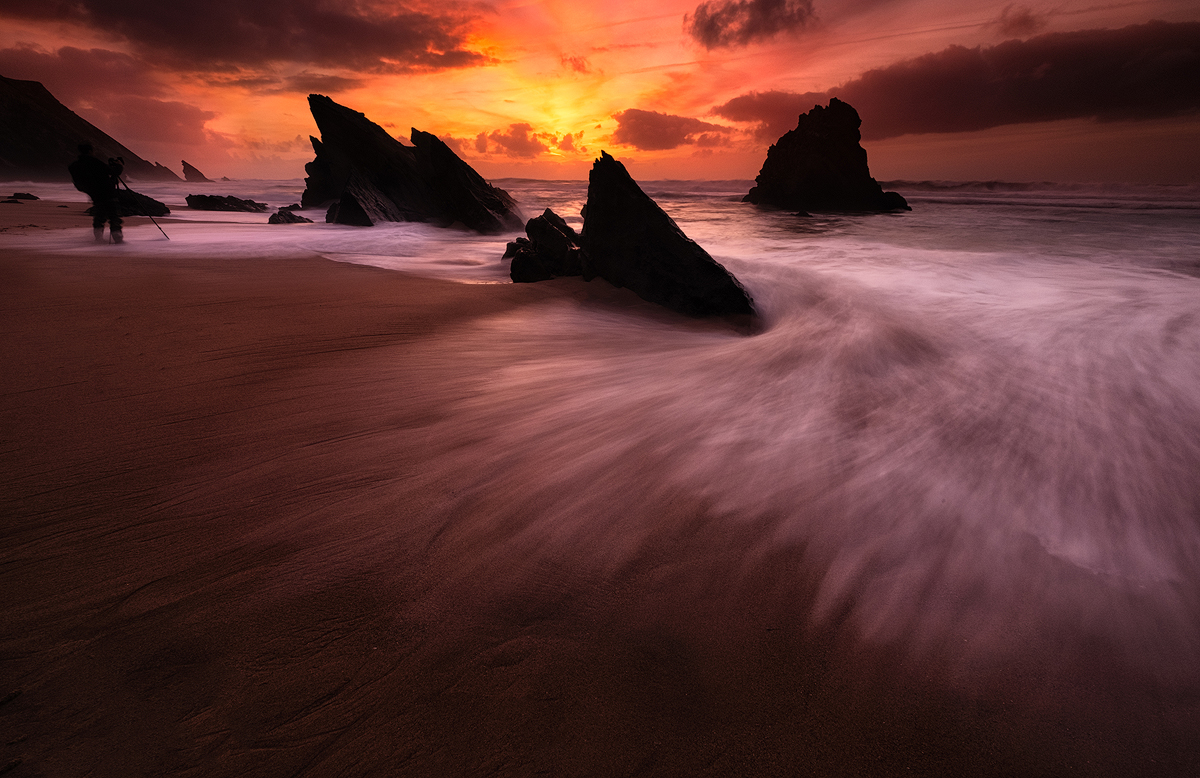





Lisbon’s Wild Coast with Fuji X-T1 | Fuji...
May 9, 2016 @ 12:48 pm
[…] I’m probably biased when I say that I genuinely believe that Lisbon is one of the most attractive cities in the world, but what many visitors who come here don’t get to see is how fantastic the nearby coast is. You don’t have to go far, just 40 minutes west or south west brings you to some amazing beaches and for landscape photographers who are willing to look a little harder, some of the most dramatic coastline for photography in Europe is less than an hour’s drive from the city center. […]
Lisbon’s Wild Coast with Fuji X-T1 | Fuji...
May 9, 2016 @ 9:50 pm
[…] I’m probably biased when I say that I genuinely believe that Lisbon is one of the most attractive cities in the world, but what many visitors who come here don’t get to see is how fantastic the nea… […]
Fuji X News | Lisbon’s Wild Coast with Fuji X-T1
May 21, 2016 @ 9:24 pm
[…] By fujixpassion […]
Fuji X News | Lisbon’s Wild Coast with Fuji X-T1
May 23, 2016 @ 6:32 am
[…] fujixpassion I’m probably biased when I say that I genuinely believe that Lisbon is one of the most […]